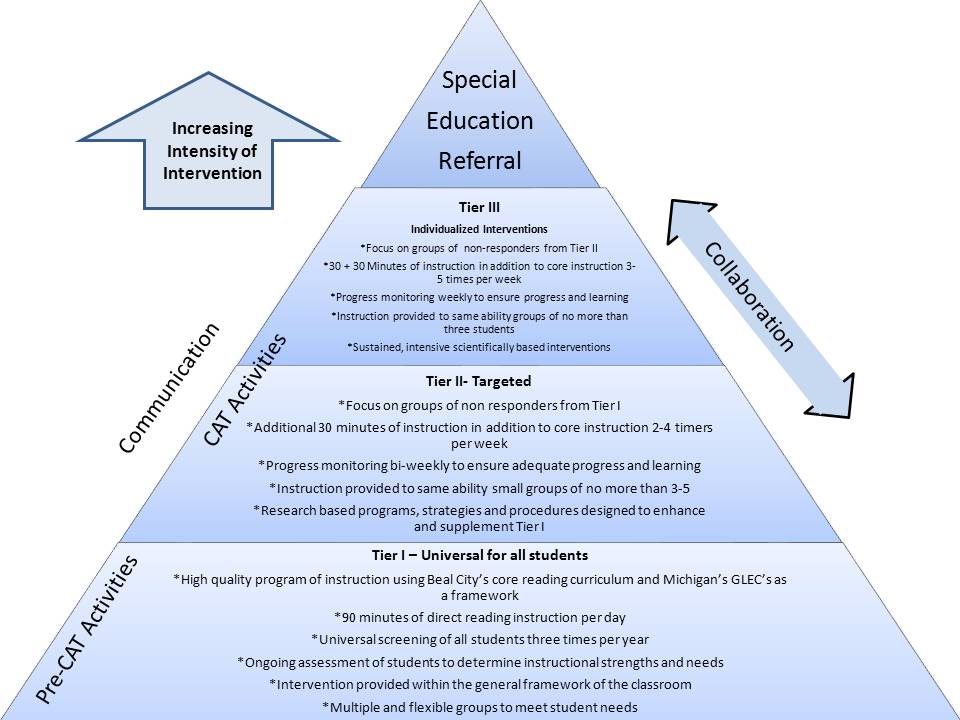Response To Intervention (RTI)
Response To Intervention
An early identification and intervention approach to literacy in grades K-6

- What is RTI?
- RTI is a collaborative process of instruction, assessment, and intervention. It is designed for the early identification of students who are struggling in reading. RtI revolves around providing targeted instructional interventions with regular progress monitoring. The goal of RtI is to increase the likelihood of successfully mastering reading skills within the regular classroom.
- What are the essential components of RTI?
- High quality instruction and intervention:
- assessment data shapes curriculum and classroom decisions, as well as individual student interventions.
- Learning rate and level of performance:
- progress monitoring provides both skill growth over time and relative standing on a dimension of reading achievement.
- Informed education decisions:
- Problem solving model used to develop appropriate interventions.
- High quality instruction and intervention:
- How does RTI work?
- RtI depends upon a Collaborative Action Team (CAT) consisting of the building principal, classroom teacher, reading specialist, and resource room teacher with the School Social Worker, the school psychologists, the speech and language therapist, as well as other Special Services personnel are used on a consultant bases. The team collects data on students from the universal screening conducted on a as need bases, but minimally three times a year for all K-6 students and analyzes the data to determine if there are any students showing a need for more support in the area of reading. The team then makes commendations for how students will be grouped, what interventions will be provided, how students will be monitored for progress, and what staff member will be appointed to work with each student.
- The RTI framework includes:
- A three-tier system of intervention
- A problem-solving method
- An integrated data collection/assessment system to inform educational decisions
RTI in Action:
All students in grades K-6 are screened three times a year to monitor progress throughout the curriculum. Some students may show that they need additional assistance mastering the skills at their grade level. These students are then referred to the CAT team and possible placement in Tier II or Tier III for interventions. District reading assessments and The Dynamic Indicators of Basic Early Literacy Skills (DIBELS) are used as assessment tools.
If less than 80 percent of the students are meeting benchmark goals, curriculum and instructional adjustments are made in the regular classroom. Individual progress monitoring is done for each student in Tier II or Tier III. Interventions are modified/adjusted, or new interventions are implemented based on how students are performing.
Collaborative Action Teams (CAT) meet every six weeks to evaluate what is being taught in the regular classroom and how skills are being taught. The team also looks at assessment data and intervention effectiveness for those students in Tier II and Tier III. Tier movement is happening all of the time. Students are able to move throughout the tiers during the entire school year depending on their current academic needs.
Intervention Team:
Classroom teachers
Building principal
Resource room teacher
Reading specialist
Consultant Team:
School psychologist
Speech and language pathologist
School Social worker
*Flowchart for Student Assistance Processes (Click for pdf copy)





